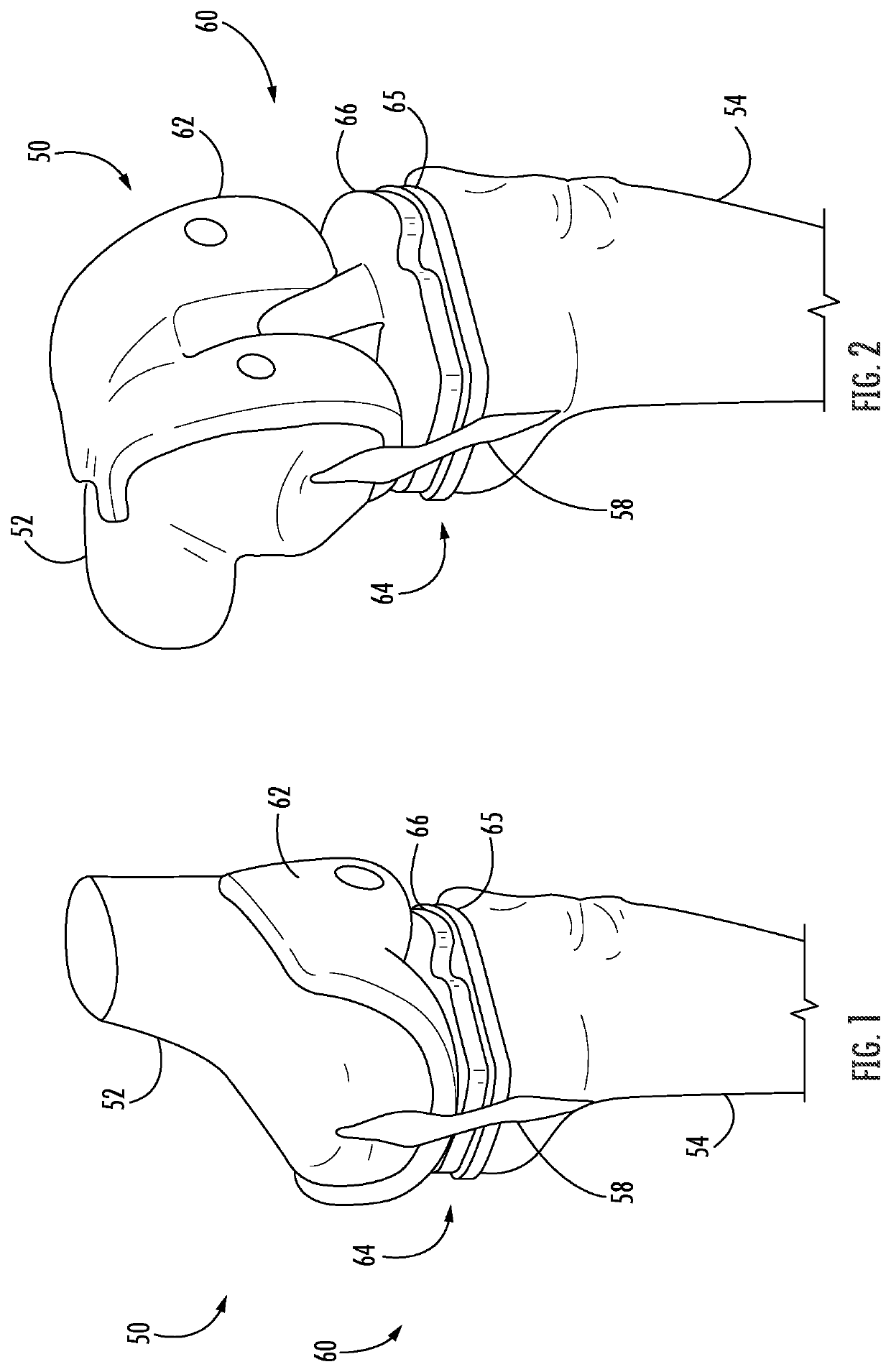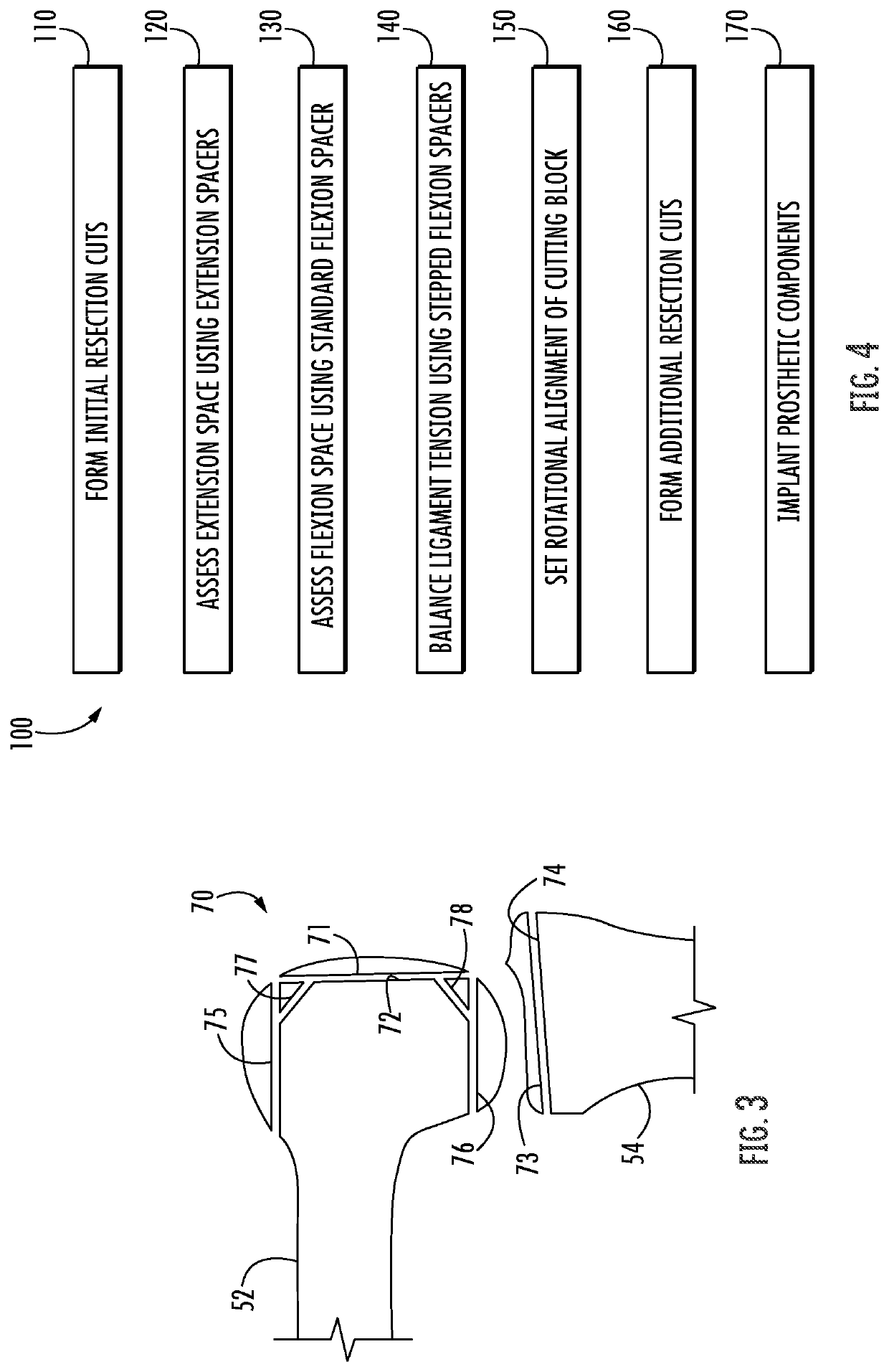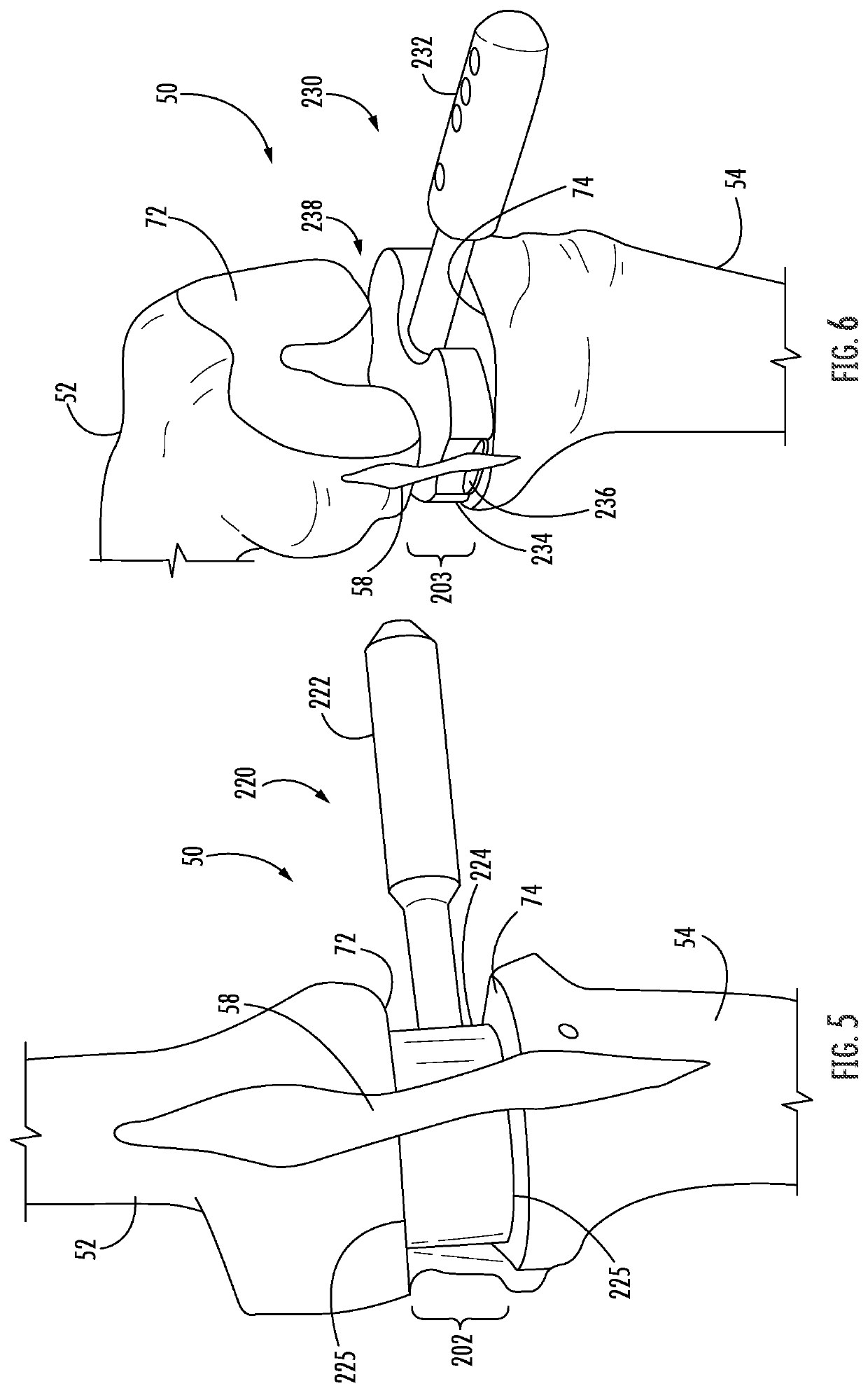Methods and instrumentation for balancing of ligaments in flexion
a technology of ligaments and flexion, applied in the field of knee replacement systems and methods, can solve the problems of increasing the degree of wear of the medial condyle in the patient's knee, affecting the quality of life of the patient, so as to reduce or eliminate the need
- Summary
- Abstract
- Description
- Claims
- Application Information
AI Technical Summary
Benefits of technology
Problems solved by technology
Method used
Image
Examples
Embodiment Construction
[0059]Embodiments of an improved method for balancing a patient's ligaments in a total knee replacement procedure including corresponding instrumentation will now be described more fully hereinafter with reference to the accompanying drawings, in which preferred embodiments of the present disclosure are presented. As will be described and illustrated, in some embodiments, the method involves balancing the ligaments of a knee during flexion, extension, and / or both. In some embodiments, the method involves forming initial resection cuts in the femur and the tibia, and subsequently placing the knee in flexion and sequentially inserting one or more flexion spacers into the flexion space, and selecting the flexion spacer that provides the ligaments of the knee with equal tension. The example method and corresponding instrumentation of the present disclosure may, however, be embodied in many different forms and should not be construed as being limited to the embodiments set forth herein. ...
PUM
 Login to View More
Login to View More Abstract
Description
Claims
Application Information
 Login to View More
Login to View More - R&D
- Intellectual Property
- Life Sciences
- Materials
- Tech Scout
- Unparalleled Data Quality
- Higher Quality Content
- 60% Fewer Hallucinations
Browse by: Latest US Patents, China's latest patents, Technical Efficacy Thesaurus, Application Domain, Technology Topic, Popular Technical Reports.
© 2025 PatSnap. All rights reserved.Legal|Privacy policy|Modern Slavery Act Transparency Statement|Sitemap|About US| Contact US: help@patsnap.com



